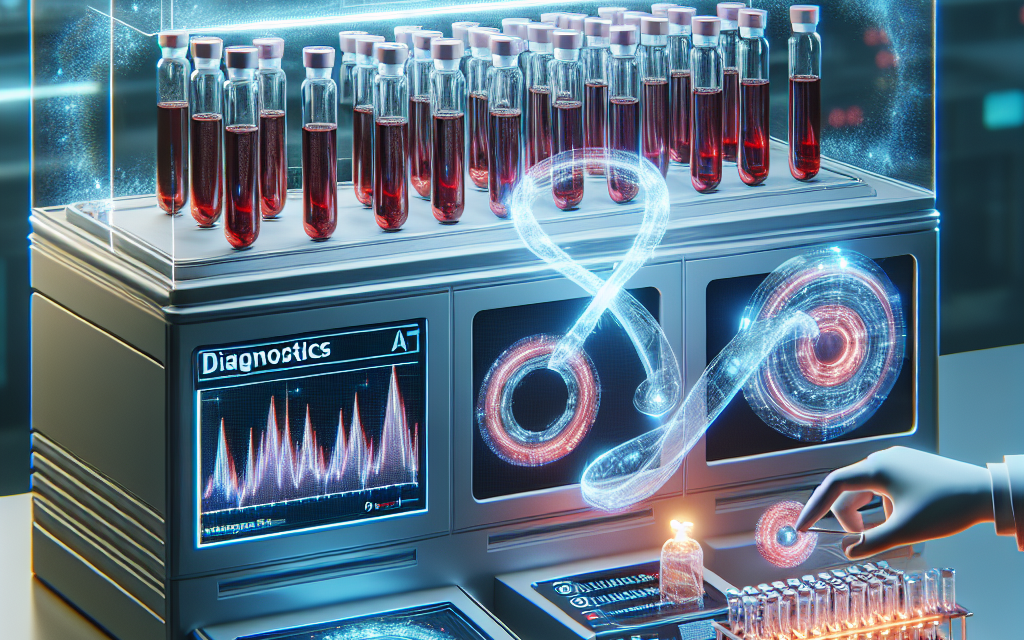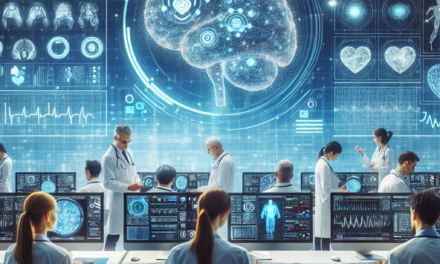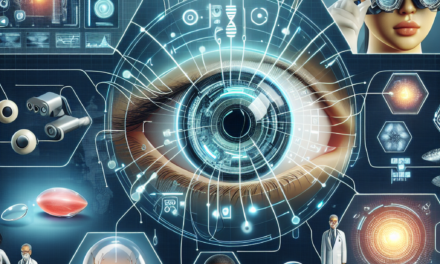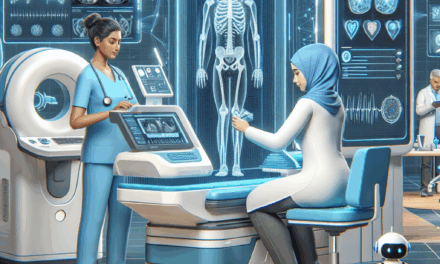Revolutionizing Testosterone Therapy with AI-Driven Diagnostics
Testosterone therapy has long been a cornerstone in the treatment of various conditions related to low testosterone levels, including hypogonadism, age-related testosterone decline, and certain psychological disorders. However, traditional diagnostic methods often fall short in accurately assessing testosterone levels and their implications for individual patients. The advent of artificial intelligence (AI) in healthcare is poised to revolutionize testosterone therapy by enhancing diagnostic accuracy, personalizing treatment plans, and improving patient outcomes. This article delves into the transformative potential of AI-driven diagnostics in testosterone therapy, exploring its implications, benefits, and future directions.
Understanding Testosterone and Its Importance
Testosterone is a vital hormone primarily produced in the testes in men and the ovaries in women, with smaller amounts produced by the adrenal glands. It plays a crucial role in various bodily functions, including:
- Regulating libido and sexual function
- Maintaining muscle mass and strength
- Supporting bone density
- Influencing mood and cognitive function
- Contributing to fat distribution
Low testosterone levels, or hypogonadism, can lead to a range of symptoms, including fatigue, depression, decreased libido, and loss of muscle mass. The diagnosis of low testosterone typically involves measuring serum testosterone levels through blood tests. However, these tests can be influenced by various factors, including time of day, stress levels, and overall health, leading to potential misdiagnosis or inappropriate treatment.
The Limitations of Traditional Diagnostic Methods
Traditional methods for diagnosing low testosterone often rely on a single serum testosterone measurement, which can be misleading. Several limitations exist within this framework:
- Variability in Testosterone Levels: Testosterone levels fluctuate throughout the day, peaking in the morning and declining in the evening. A single measurement may not accurately reflect a patient’s average testosterone level.
- Influence of External Factors: Factors such as stress, illness, and medications can affect testosterone levels, leading to inaccurate assessments.
- Limited Contextual Information: Traditional diagnostics often fail to consider a patient’s overall health, lifestyle, and psychological factors that may contribute to low testosterone symptoms.
- Inadequate Risk Assessment: Current diagnostic methods do not effectively assess the risk of developing conditions associated with low testosterone, such as cardiovascular disease or metabolic syndrome.
These limitations highlight the need for more sophisticated diagnostic approaches that can provide a comprehensive understanding of a patient’s hormonal health. AI-driven diagnostics offer a promising solution by leveraging advanced algorithms and data analytics to enhance the accuracy and reliability of testosterone assessments.
AI-Driven Diagnostics: A New Frontier in Testosterone Therapy
Artificial intelligence has the potential to transform testosterone therapy by providing more accurate diagnostics and personalized treatment plans. Here are several ways AI is making an impact:
1. Enhanced Data Analysis
AI algorithms can analyze vast amounts of data from various sources, including electronic health records (EHRs), laboratory results, and patient-reported outcomes. This capability allows for:
- Pattern Recognition: AI can identify patterns in testosterone levels over time, accounting for fluctuations and providing a more accurate assessment of a patient’s hormonal status.
- Predictive Analytics: By analyzing historical data, AI can predict which patients are at risk for developing low testosterone levels or related health issues, enabling proactive interventions.
- Integration of Multimodal Data: AI can integrate data from various sources, including genetic information, lifestyle factors, and comorbidities, to create a comprehensive profile of a patient’s health.
2. Personalized Treatment Plans
AI-driven diagnostics can facilitate the development of personalized treatment plans tailored to individual patients. This personalization can include:
- Customized Dosage: AI can analyze a patient’s response to testosterone therapy and adjust dosages accordingly, optimizing treatment effectiveness while minimizing side effects.
- Targeted Interventions: By understanding a patient’s unique hormonal profile, AI can recommend specific lifestyle changes, supplements, or medications that may enhance treatment outcomes.
- Monitoring and Feedback: AI systems can continuously monitor a patient’s progress and provide real-time feedback, allowing for timely adjustments to treatment plans.
3. Improved Patient Engagement
AI-driven diagnostics can enhance patient engagement by providing accessible and understandable information about their health. This can lead to:
- Empowerment: Patients can gain insights into their hormonal health, enabling them to take an active role in their treatment decisions.
- Education: AI can provide personalized educational resources that help patients understand the implications of their testosterone levels and the importance of adherence to treatment.
- Support Systems: AI-driven applications can offer support through reminders, progress tracking, and community forums, fostering a sense of connection among patients undergoing similar treatments.
4. Cost-Effectiveness
Implementing AI-driven diagnostics in testosterone therapy can lead to significant cost savings for healthcare systems and patients alike. Key factors include:
- Reduced Misdiagnosis: By improving diagnostic accuracy, AI can reduce the costs associated with misdiagnosis and inappropriate treatments.
- Efficient Resource Allocation: AI can help healthcare providers allocate resources more effectively, ensuring that patients receive the right care at the right time.
- Long-Term Savings: Early identification and treatment of low testosterone can prevent the development of more serious health issues, leading to long-term cost savings for both patients and healthcare systems.
5. Ethical Considerations and Challenges
While the potential benefits of AI-driven diagnostics in testosterone therapy are significant, several ethical considerations and challenges must be addressed:
- Data Privacy: The use of AI requires access to sensitive patient data, raising concerns about privacy and data security.
- Bias in Algorithms: AI systems can inadvertently perpetuate biases present in the data they are trained on, leading to disparities in care.
- Regulatory Oversight: The rapid development of AI technologies necessitates robust regulatory frameworks to ensure safety and efficacy in clinical applications.
- Patient Consent: Patients must be informed about how their data will be used and the implications of AI-driven diagnostics on their treatment.
Case Studies: AI in Action
Several healthcare organizations and research institutions are already exploring the use of AI in testosterone therapy. Here are a few notable case studies:
1. The Mayo Clinic’s AI Initiative
The Mayo Clinic has been at the forefront of integrating AI into various aspects of healthcare, including hormone therapy. Their research focuses on developing AI algorithms that analyze EHR data to identify patients at risk for low testosterone levels. By leveraging machine learning techniques, they have successfully predicted testosterone deficiency in a cohort of patients, leading to earlier interventions and improved outcomes.
2. IBM Watson Health
IBM Watson Health has developed AI-driven tools that assist healthcare providers in diagnosing and treating hormonal imbalances. Their platform analyzes patient data to provide personalized treatment recommendations based on individual health profiles. In clinical trials, patients using Watson’s recommendations reported higher satisfaction rates and better adherence to treatment plans.
3. Stanford University’s Research on AI and Hormonal Health
Stanford University researchers have conducted studies examining the use of AI in predicting testosterone levels based on a combination of clinical data and patient-reported outcomes. Their findings suggest that AI can significantly enhance diagnostic accuracy, leading to more effective treatment strategies for patients with low testosterone.
The Future of AI-Driven Testosterone Therapy
The future of testosterone therapy is undoubtedly intertwined with advancements in AI technology. As research continues to evolve, several trends are likely to shape the landscape:
- Integration with Wearable Technology: The rise of wearable devices that monitor health metrics could provide real-time data for AI algorithms, enhancing the accuracy of testosterone assessments.
- Telemedicine and Remote Monitoring: AI-driven diagnostics can facilitate remote monitoring of patients, allowing healthcare providers to manage testosterone therapy more effectively from a distance.
- Collaborative Care Models: AI can support collaborative care models that involve multidisciplinary teams, ensuring comprehensive management of patients’ hormonal health.
- Continuous Learning Systems: AI algorithms will continue to learn from new data, improving their predictive capabilities and treatment recommendations over time.
- Global Accessibility: As AI technology becomes more widespread, it has the potential to improve access to testosterone therapy in underserved populations, addressing disparities in care.
Conclusion
The integration of AI-driven diagnostics into testosterone therapy represents a significant advancement in the field of endocrinology. By addressing the limitations of traditional diagnostic methods, AI has the potential to enhance diagnostic accuracy, personalize treatment plans, and improve patient engagement. As healthcare continues to evolve, the collaboration between AI technology and clinical practice will be crucial in optimizing testosterone therapy and ensuring better health outcomes for patients. The future holds great promise for AI in revolutionizing not only testosterone therapy but also the broader landscape of hormonal health management.





